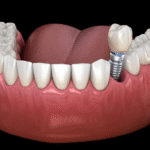At first glance, an older building might appear normal; its architecture may be charming or its character intriguing – yet behind those walls and beneath those floors may lie unseen health risks that you don’t even recognize. But such commercial properties contain much more than history alone: many contain materials that pose real threats to personal health and safety. As a business owner or property management expert, you cannot ignore such threats.
Before embarking on any renovation, you should find a good asbestos removal company you can trust. Don’t skip over this important step, hoping to save time and money.
Understanding Asbestos’s Common Risks
Most people have heard about asbestos. Once used widely for insulation and fireproofing purposes, its main use now lies in demolition projects, and its breakdown poses real threats when inhaled; its tiny fibers may get trapped deep within your lungs leading to serious respiratory ailments like lung cancer and asbestosis. Buildings constructed prior to 1980 often contain asbestos – it should be the first thing you look out for during renovation projects!
As for lead-based paint, while it might not seem so dangerous when left undisturbed, once disturbed it becomes toxic. This should be addressed when working in older commercial properties; buildings dating before 1978 contain lead as a key ingredient in that vibrant paint. As the paint chips or disintegrates, lead dust clouds become airborne and can be inhaled or ingested; the health risks become ever more exacerbated when children or pregnant women come into direct contact with them.
Mold thrives in damp, poorly ventilated spaces such as basements. If there have been water damages, plumbing leaks or poor air circulation issues, they cause dampness, and mold could grow behind these walls. Mold spores can cause allergic reactions, asthma attacks or respiratory conditions in its victims. This poses a particularly large problem when dealing with older buildings that haven’t seen a paint update in decades!
Impact of These Hazards on Occupants and Workers
So what happens if these hazards go unaddressed? The dangers are clear: asbestos exposure poses real lung disease risks while lead-based paint contamination affects children and has serious repercussions for adults as well. Breathing dust could pose major health threats; inhalation could push lead dust into your system leading to serious illness issues that require medical intervention.
Mold can be tricky because it often doesn’t surface until it is too late; once visible it can cause chronic respiratory conditions, fatigue headaches, sinus issues and more. Left unchecked it could spread throughout a building making eradication impossible and creating health hazards to everyone involved in its control.
The Role of Regulatory Compliance in Safe Renovations
Renovating old buildings safely requires more than simply wearing a mask and breaking things apart; renovation requires someone who understands environmental safety. There are specific regulations in place that ensure both workers and occupants of renovated spaces remain protected during and post-renovation processes. When dealing with asbestos, lead, and mold removal projects it must be performed by licensed professionals following safety standards.
Failing to comply with regulations can be both hazardous to health and costly; fines, lawsuits and potential shutdown of projects could all ensue from disregarding them. Therefore, it’s always better to invest time and money upfront to make sure everything goes as smoothly as possible.
How to Identify and Mitigate Risks Before Renovation
A key step of any renovation process should include conducting an intensive building inspection by professional inspectors to identify asbestos, lead paint and mold issues that require removal or remediation services. Once you know exactly what you are dealing with, you will know who to hire to perform these functions.
The goal should always be safety. That means not only complying with legal regulations but also taking additional precautions against exposure; workers should wear appropriate protection gear and any areas containing hazardous materials should be sealed off to reduce contamination risks.
Conclusion
At the core of any renovation project is health and safety. From workers to future tenants and everyone in between, ensuring environmental safety is key. Prior to making that first hammer swing, take time to identify any hidden potential dangers in the walls that might present hazards; address them early to protect everyone involved with your renovation and ensure its successful outcome.









